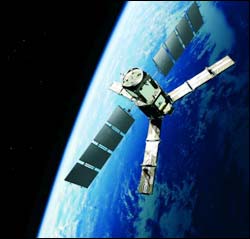
New findings suggest that surface geometry determines volcanic activity
What causes the peaks and valleys of the world’s great mountains? For continental ranges like the Appalachians or the Northwest’s Cascades, the geological picture is clearer. Continents crash or volcanoes erupt, then glaciers erode away. Yet scientists are still puzzling out what makes the highs high and the lows low for the planet’s largest mountain chain, the 55,000-mile-long Mid-Ocean Ridge.
This we
The National Center for Atmospheric Research (NCAR) in Boulder, Colo., is unveiling a powerful new version of a supercomputer-based system to model Earth’s climate and to project global temperature rise in coming decades. Scientists will contribute results to the next assessment by the Intergovernmental Panel on Climate Change (IPCC), an international research body that advises policymakers on the likely impacts of climate change. The system, known as the Community Climate System Model, version
In a study published in Geophysical Research Letters (Vol. 31, No.18), University of South Florida College of Marine Science professor Boris Galperin and colleagues explain a link between the movement and appearance of ocean currents on Earth and the bands that characterize the surface of Jupiter and some other giant planets.
“The banded structure of Jupiter has long been a subject of fascination and intensive research,” says Galperin, a physical oceanographer who analyzes turbulence theo
Scientists have discovered a striking similarity between certain ocean currents on Earth and the bands that characterize the surface of large, gaseous planets like Jupiter. Boris Galperin of the University of South Florida’s College of Marine Science in Saint Petersburg and colleagues in the United States, Israel, and Japan report their findings later this month in Geophysical Research Letters, published by the American Geophysical Union. “The banded structure of Jupiter has long been a
Whenever a hurricane races across the Atlantic Ocean, chances are phytoplankton will bloom behind it. According to a new study using NASA satellite data, these phytoplankton blooms may also affect the Earth’s climate and carbon cycle.
Dr. Steven Babin, a researcher at the Johns Hopkins University Applied Physics Laboratory in Laurel, Md., studied 13 North Atlantic hurricanes between 1998 and 2001. Ocean color data from the SeaWiFS instrument on the SeaStar satellite were used to analyze l

A significant milestone in the development of ESA’s Soil Moisture and Ocean Salinity (SMOS) mission was reached last week when the contract to build the payload was signed between ESA and EADS (European Aeronautic Defence and Space Company)-CASA from Spain.
The contract, worth 62 million euros, was signed in Madrid, Spain on 11 June 2004 at the premises of the CDTI (Centre for Development of Industrial Technology). EADS-CASA now heads an industrial consortium of more than 20 companie